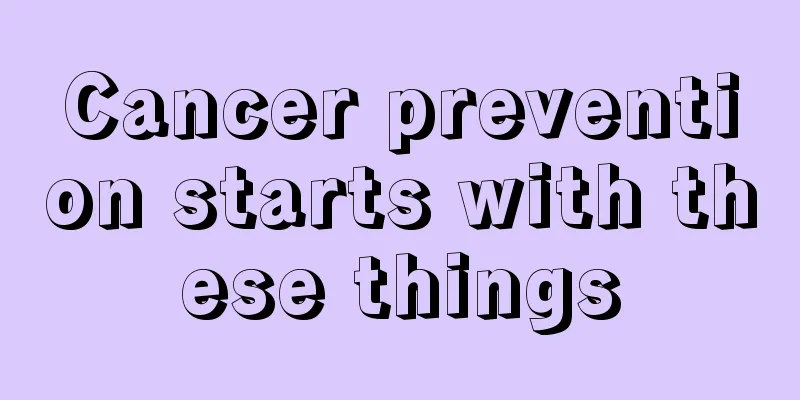7 unexpected carcinogens

|
1. Tap water Researchers have found that the disinfectant bleaching powder added to tap water will release active chlorine. Long-term drinking of tap water containing active chlorine may induce bladder cancer and rectal cancer. The carcinogenic factor is not the bleaching powder itself, but some chlorine byproducts produced by its chemical reaction with pollutants in the water. Trihalomethanes are the products of the reaction between chlorine, which is used for disinfection and sterilization in water treatment plants, and organic matter such as food residues and plankton. As water quality deteriorates, the amount of chlorine added to tap water is increasing day by day, and it plays a major role in producing carcinogens. In addition, the water dispenser next to you is another source of cancer. Studies have confirmed that repeatedly boiling water will produce carcinogenic nitrite. However, few people will specifically turn off the heating switch of public water dispensers. Drinking water in this state every day poses hidden dangers to the body. You should develop the habit of turning off the water dispenser. Beautiful and colorful ceramic water cups often have a lot of heavy metals added during the firing process, and these heavy metals lurking in the cups become the closest carcinogens to us. Experts suggest that it is best to choose an enamel cup as your daily water cup to avoid bringing "tragedy". At the same time, please note that some low-quality disposable paper cups contain ink and other substances that can also cause cancer.
2. Clothes Your wardrobe may also include stretch tights, nylon pants, and nylon socks. Nylon polyester synthetic fiber fabrics can release trace amounts of "plastic monomers" after being heated by the human body. Softening agents, aerosols and antistatic agents added during processing are potentially harmful to the human body. The main ingredient of clothing disinfectant is sodium hypochlorite, which is used to disinfect tap water, so it is safe and non-toxic. However, being non-toxic does not mean that it can be used frequently. It is irritating to the skin, mainly by degreasing it, which leads to rough skin. Moreover, this ingredient has a serious damaging effect on many fabrics such as wool, silk, rabbit hair, nylon, etc. Dry cleaning clothes is indeed convenient, clean and can protect clothes. However, clothing dry cleaning agents and stain removers contain ethylene peroxide, which can damage the hematopoietic function of the liver and bone marrow.
3. Printer Commonly used printers and copiers are actually dangerous elements. The toner needed in these machines may be made of carbon black as raw material, and these carbon blacks contain polycyclic aromatic hydrocarbons and dimethylnitrosamine, which are all well-known carcinogens. Therefore, you should try to keep a distance from the machine when copying, and do not arrange your workstation next to the printer or copier. There are also correction agents, ink removers, and correction fluids that are very convenient to use, but these chemicals generally contain toxic chemicals such as benzene and mercury, which will stimulate excessive secretion of adrenaline and increase the heart's sensitivity to adrenaline, causing accelerated and irregular heartbeats. In severe cases, acute heart disease or even death may occur.
4. Toilet Sit-down toilets have replaced squat toilets, but some experts have warned that when sitting on the toilet, a closed space is formed between the body and toxic substances. Over time, these toxic gases will enter the human body and in severe cases can cause hemorrhoids, anal inflammation, chronic vaginitis, and even gynecological tumors such as cervical cancer. Various odors such as sewer odor and toilet odor gather in the bathroom. Housewives with obsessive-compulsive disorder can't help but spray air freshener or perfume from time to time to cover up the unpleasant smell. Little do they know that these odors may become a risk factor for cancer.
5. White paper Some foreign experts have warned that the white paper people use in daily life is also a carcinogen. How does paper cause cancer? It turns out that in the papermaking process, the pulp needs to be bleached to become the white color we see in daily life. The bleaching agent currently used by most paper mills is chlorine. Chlorine will produce a variety of toxic residues during the entire chemical reaction, among which the most concerning is a dioxin compound. This compound is easily absorbed by fat. If food containing fat is packaged in paper, this compound may dissolve into the food, and people will get sick without knowing it. Various printing papers, writing papers, and even toilet paper in the bathroom, if they are not branded goods obtained through legitimate channels, may have a large amount of fluorescent brighteners added to make the paper whiter and brighter. These brighteners are carcinogenic to a certain extent.
6. Cleaning products The chemical components in detergents also cause varying degrees of damage to hair and other organs of the human body. Detergent residue on bowls and plates is a threat to the health of your family. In addition, you may also be accustomed to mixing different cleaning agents together to enhance the cleaning effect. However, some household cleaning agents are acidic, while others are alkaline, and chemical reactions may occur when mixed. For example, using toilet cleaners to remove scale may produce irritating ammonia gas or ammonia water. When ammonia water is mixed with a cleaning agent with bleaching properties, toxic chloramine gas is easily produced. Excessive inhalation will cause severe lung inflammation and pulmonary edema.
7. Earth Radiation One of the radioactive carcinogens is ground radiation, which is a kind of energy emitted by groundwater under high pressure. Especially at the intersection of groundwater, the intensity of ground radiation will be superimposed and surge, forming very strong radiation energy, which causes mutation of human cells and causes cancer; the second is radioactive substances in buildings, such as radon gas. General household building materials contain some radioactive substances to varying degrees, especially newly built houses, which have a greater risk of radioactivity. These radioactive substances are prone to cause cancer. Therefore, no one wants to get involved in cancer. If you want to live a healthier life, you must take precautions against carcinogens in your life in advance to avoid disease invasion. |
<<: Are you one of the top 10 bad habits that damage your teeth?
>>: If your five senses suddenly fail, be alert to intracranial tumors
Recommend
What are the symptoms of vitamin D deficiency rickets
If rickets occurs in the body, it is usually caus...
Taboos of soaking feet in ginger water
For people with cold hands and feet, we recommend...
Phlegm-damp constitution is better than taking these Chinese patent medicines
Nowadays, some people have allergic constitutions...
What is the reason for my stomach to keep rumbling?
Sometimes your stomach will make rumbling sounds ...
Nursing methods for common symptoms of liver cancer patients after discharge
Liver cancer patients can be discharged from the ...
How to treat allergic eczema?
Allergic eczema is a common inflammatory skin dis...
Does a weak positive result mean implantation?
After the fertilized egg successfully implants in...
The harm of washing hair with rice water
Rice water has certain nutritional value. It cont...
There is a secret to diet therapy for gallbladder tumors
In today's society, the treatment of gallblad...
Choose treatment methods based on prostate cancer risk level
The prognostic risk of prostate cancer varies dep...
There are three main reasons why non-smokers get lung cancer
For most people, the cause of lung cancer is rela...
How to drink red wine for the best health benefits?
Red wine is a natural health drink, so drinking s...
What are the symptoms of stage 1 nasopharyngeal carcinoma
Many people have a relatively clear understanding...
What's wrong with sweating, dizziness and discomfort
Our bodies are always bound to have some symptoms...
Is reverse abdominal breathing harmful to humans?
If reverse abdominal breathing is not mastered we...









